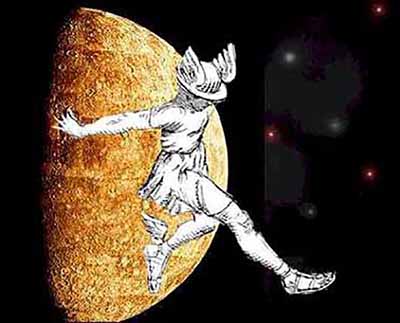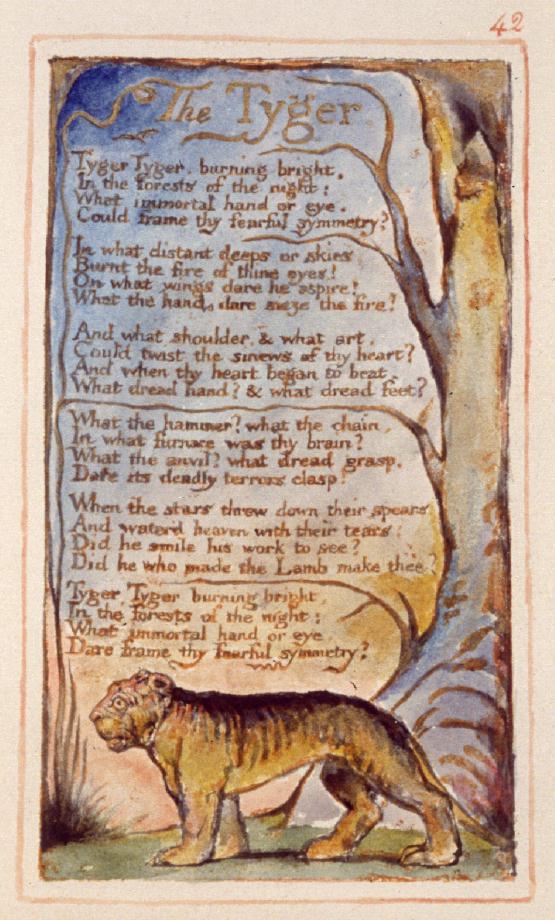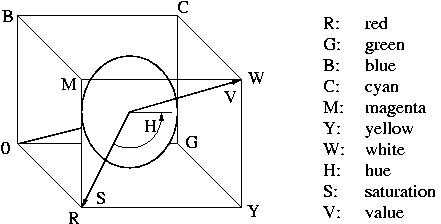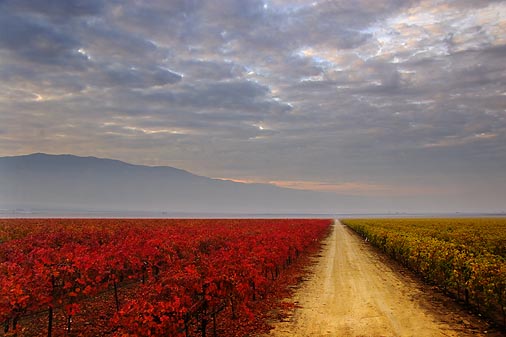Friday, February 29, 2008
Campaign 2008: Dueling "3 a.m." commercials
Courtesy of the New York Times, the Jurisdynamics Network is pleased to present the dueling "3 a.m." commercials being aired by the Hillary Rodham Clinton and Barack Obama campaigns. We embed; you decide:
| Hillary Clinton's ad | Barack Obama's ad |
|---|---|
Labels: 2008 campaign
Thursday, February 28, 2008
A new blog: Commercial Law
 |  |  |
We hope you will visit Commercial Law often at http://UCCLaw.blogspot.com.
Wednesday, February 27, 2008
Who can frame thy brilliant symmetry?
 |  |  |
Kelly J. Bozanic, a student blogger at Red Lion Reports, has posted a truly beautiful item called More than skin deep:
Ah, symmetry. The prospect that symmetry reflects not only beauty but also intelligence strikes a fearful chord. Perhaps no work has captured this fear as vividly as William Blake, The Tyger, Songs of Experience (ca. 1794):Beauty speaks to the genetic disposition of an individual, and [a recent University of New Mexico] study suggests that intelligence can be accurately predicted solely based on appearance. . . . What makes an individual objectively attractive has occupied our minds for centuries. Countless previous studies of what constitutes beauty have found that symmetry is the key factor; the most recognizable illustration of this is Leonardo Da Vinci’s Vitruvian Man. The Golden Ratio, Fibonacci Sequence and Divine Proportion all indicate the same thing: There is a formula for symmetry in nature and those who closely follow this formula are beautiful.
| Tyger! Tyger! burning bright In the forests of the night. What Immortal hand or eye Could frame thy fearful symmetry? In what distant deeps or skies Burnt the fire of thine eyes? On what wings dare he aspire? What the hand, dare seize the fire? And what shoulder, and what art, Could twist the sinews of thy heart? And when thy heart begin to beat, What dread hand? and what dread feet? What the hammer? What the chain? In what furnace was thy brain? What the anvil? what dread grasp Dare its deadly terrors clasp? When the stars threw down their spears, And water'd heaven with their tears, Did he smile his work to see? Did he who made the lamb make thee? Tyger! Tyger! burning bright, In the forests of the night. What Immortal hand or eye Dare frame thy fearful symmetry? |  |
Tyger! Tyger! Burning bright | |
 | |
Tuesday, February 26, 2008
Literary Warrant [26]

- Robert Esworthy, Specialist in Environmental Policy, Resources, Science, and Industry Division, Congressional Research Service (CRS), Federal Pollution Control Laws: How Are They Enforced? (CRS Report for Congress, Order Code RL34384) (February 20, 2008)
"This report provides an overview of the statutory framework, key players, infrastructure, resources, tools, and operations associated with enforcement and compliance of the major pollution control laws and regulations administered by EPA. It also outlines the roles of federal (including regional offices) and state regulators, as well as the regulated community. Understanding the many facets of how all federal pollution control laws are enforced, and the responsible parties involved, can be challenging. Enforcement of the considerable body of these laws involves a complex framework and organizational setting."—Summary. - Kelly Sims Gallagher & Erich Muehlegger, John F. Kennedy School of Government, Harvard University, Giving Green to Get Green: Incentives and Consumer Adoption of Hybrid Vehicle Technology (Faculty Research Working Paper Series, RWP08-009) (February 2008)
"Federal, state and local governments use a variety of incentives to induce consumer adoption of hybrid-electric vehicles. We study the relative efficacy of state sales tax waivers, income tax credits and non-tax incentives and find that the type of tax incentive offered is as important as the value of the tax incentive. Conditional on value, we find that sales tax waivers are associated a seven-fold greater increase in hybrid sales than income tax credits. In addition, we estimate the extent to which consumer adoption of hybrid-electric vehicles (HEV) in the United States from 2000-2006 can be attributed to government incentives, changing gasoline prices, or consumer preferences for environmental quality or energy security. After controlling for model specific state and time trends, we find that rising gasoline prices are associated with higher hybrid sales, although the effect operates entirely through sales of the hybrid models with the highest fuel economy. In total, we find that tax incentives, rising gasoline prices and social preferences are associated with 6, 27 and 36 percent of high economy hybrid sales from 2000-2006."—Abstract.
- National Governors Association, Governors Highlight Role of States in Securing a Clean Energy Future (January 25, 2008)
"The National Governors Association 2008 Winter Meeting concluded today with a closing plenary session reinforcing the role of states in advancing a clean energy future for America and highlighting the recent successes of NGA's Securing a Clean Energy Future Initiative (SCEF Initiative)."—News release. - Christian Nellemann, Stefan Hain, Jackie Alder, United Nations Environment Programme (UNEP), In Dead Water: Merging of Climate Change with Pollution, Over-harvest, and Infestations in the World’s Fishing Grounds (Rapid Response Assessment) (February 2008)
"In this report, the locations of the most productive fishing grounds in the World—from shallow, coastal waters to the deep and high seas—are compared to projected scenarios of climate change, ocean acidification, coral bleaching, intensity of fisheries, land-based pollution, increase of invasive species infestations and growth in coastal development."—Summary. - Renewable Fuels Association (RFA), Changing the Climate: Ethanol Industry Outlook 2008 (February 2008)
"The Outlook provides historical statistical information about the U.S. ethanol industry from gallons produced to bushels of corn utilized. In addition, the Outlook provides easy-to-read charts and graphs highlighting the critical facts about American ethanol production, including water usage, distillers grains production and consumption, economic contributions, and environmental benefits of ethanol use."—Press release (February 25, 2008) - Nic Rivers, M.K. Jaccard & Assocs. & Dave Sawyer, Enviroeconomics, Pricing Carbon:
Saving Green—A Carbon Price to Lower Emissions, Taxes and Barriers to Green Technology (2008)"Pricing Carbon: Saving Green—A Carbon Price to Lower Emissions, Taxes and Barriers to Green Technology offers solutions to government for reducing greenhouse gas emissions while maintaining a robust economy.
"The report provides a detailed economic analysis of how a strong and consistent carbon price across the entire Canadian economy can help reduce greenhouse gas emissions with minimal damage to the economy."—David Suzuki Foundation. - United Nations Environment Programme (UNEP), Climate Neutral Network
"The United Nations Environment Programme (UNEP) launched Climate Neutral Network, a web-based project to federate the growing wave of nations, local authorities and companies who are pledging to significantly reduce emissions en route to zero emission economies, communities and businesses. According to the site, 'Small changes in our daily life may contribute positively in reducing our climate footprint without necessarily compromising the world.'"—UN Pulse (February 21, 2008) - United Nations Environment Programme (UNEP), International Labour Organisation (ILO) & International Trade Union Confederation (ITUC), Green Jobs: Towards Sustainable Work in a Low-Carbon World (Preliminary Report) (December 21, 2007)
"The present report assembles evidencemdash;quantitative and conceptualmdash;for currently existing green jobs in sectors such as renewable energy, energy efficiency in buildings and vehicles, sustainable transportation, and organic agriculture, and presents various estimates for future green employment. (A future version will provide expanded coverage in additional parts of the economy.)"—Executive Summary. - United Nations, International Strategy for Disaster Reduction (ISDR), Disaster Figures for 2007: Asia Continues to Be Hit Hardest by Disasters (UN/ISDR 2008/01) (January 18, 2008)
"2007 saw a marked increase in the number of floods compared with the average of the last seven years, and Asia was the continent hit hardest by disasters according to figures released today by the Belgian WHO collaborating Center for Research on Epidemiology of Disasters (CRED). The yearly figures were released today in a press conference coorganized by the secretariat of the International Strategy for Disaster reduction (UN/ISDR) in Geneva."—Press release. - United States Department of Homeland Security (DHS), Office of Inspector General (OIG), DHS OIG Reviews: FEMA's Use of Proceeds From the Sales of Emergency Housing Unit, Pine Electric Power Association (February 25, 2008)
"Starting in fiscal year 2005, and continuing through early 2007, Federal Emergency Management Agency (FEMA) officials used funds received from the sale of used travel trailers and mobile homes to partially finance the operations of a dozen Emergency Housing Unit (EHU) sites in seven states. However, more than $13.5 million of the sales proceeds were expended for ineligible purchases. This occurred because FEMA program officials failed to ensure that the EHU expenditures met General Services Administration (GSA) regulations on the use of sales proceeds."—Executive Summary, Review of FEMA’s Use of Proceeds From the Sales of Emergency Housing Units (OIF-08-23) (February 2008) - United States House of Representatives, Committee on Energy and Commerce, Climate Change Legislation Design White Paper: Appropriate Roles for Different Levels of Government (February 2008)
"Addressing climate change will require employing a variety of tools. The primary tool at the Federal level will be a national, economy-wide cap-and-trade program that reduces greenhouse gas emissions by 60 to 80 percent by 2050. Other tools that could be used include appliance efficiency standards, building codes, land use decisions, performance standards, public transit, and incentives to increase efficiency. Some tools will be more effective and appropriate in the hands of State, Tribal, or local governments; others will work better in Federal hands."—Executive Summary.
Monday, February 25, 2008
Cubes, cones, and color: Cutting through the RGB and HSV colorspaces with clarity

On this forum as on MoneyLaw and on The Cardinal Lawyer, I've confessed my obsession with the mathematics of TrueColor. On the strength of a single Google search — RGB cube — I've found two sites that have truly sharpened my understanding of the mathematics of color.
 One thing that has troubled me has been my lack of understanding of the mathematical relationships between the RGB (red-green-blue) and the HSV (hue-saturation-value) representations of color. The RGB colorspace is conceptually cubic. Its three axes — red, green, blue — define the colors emitted by the contemporary equivalent of the cathode ray tubes that powered color television.
One thing that has troubled me has been my lack of understanding of the mathematical relationships between the RGB (red-green-blue) and the HSV (hue-saturation-value) representations of color. The RGB colorspace is conceptually cubic. Its three axes — red, green, blue — define the colors emitted by the contemporary equivalent of the cathode ray tubes that powered color television. The HSV colorspace is conceptually conic. It attempts to measure color in terms that humans use in perceiving and describing this phenomenon. The RGB colorspace works well for computers, but it falls short as a way of expressing the shade, brightness, or vivacity of a color.
The HSV colorspace is conceptually conic. It attempts to measure color in terms that humans use in perceiving and describing this phenomenon. The RGB colorspace works well for computers, but it falls short as a way of expressing the shade, brightness, or vivacity of a color.The difficulty in translating between the RGB and HSV colorspaces is a three-dimensional variation on one of the basic problems of plane geometry that frustrated the ancients. You can't square the circle, not with rational numbers at any rate, and a fortiori you can't turn either a sphere or a cone into a cube without resort to that constant as beautiful as it is irrational, π.
Read the rest of this post . . . .Difficult, that is, till I encountered this page, which explains the relationship between the RGB and HSV colorspaces in elegant, crystal-clear terms. The line drawing atop this post summarizes the beautiful relationship between the RGB and HSV colorspaces. Connect the origin of the RGB cube with its opposite corner, and let that line represent the entire grayscale from pure black to pure white. Then all colors sharing the same value can be represented as a plane perpendicular to that so-called neutral axis. Each degree of saturation manifests itself as a cone of a certain width around that axis. And if you set the red axis to 0 and 360 degrees of a circle connecting all six of the nonblack/nonwhite vertices of the RGB cube, then hue is a wedge — half a triangular section of the HSV cone, if you will, right through the neutral axis — dialed to the specific point around that circle.
 And as though that were not enough, the RGB/HSV page included a quick reference to the concept of luminance, at least as applied to computer graphics. The value of this concept is that it mediates between RGB color, which is an absolute property, and the variable receptivity of the human brain to the red, green, and blue constituents of light. As defined and explained on this website, a simple mathematical formula translates raw RGB values into a scalar expression of luminance that guides graphic designers in their color choices for the benefit of readers and viewers:
And as though that were not enough, the RGB/HSV page included a quick reference to the concept of luminance, at least as applied to computer graphics. The value of this concept is that it mediates between RGB color, which is an absolute property, and the variable receptivity of the human brain to the red, green, and blue constituents of light. As defined and explained on this website, a simple mathematical formula translates raw RGB values into a scalar expression of luminance that guides graphic designers in their color choices for the benefit of readers and viewers:Y = 0.30 R + 0.59 G + 0.11 B
where Y represents luminance and R, G, and B represent, respectively, the relative amounts of red, green, or blue. When red, green, and blue are expressed in decimal terms, R, G, and B can be computed by dividing rgb(x, y, z) values by 255. When red, green, and blue are expressed in hexadecimal terms, R, G, and B can be computed by dividing each pair in a hex triplet by FF.
The following table explains the luminance associated with some of the most frequently used colors in the Jurisdynamics Network's stylesheets. Some of my choices, especially ochre lettering on an olive green background, fall a bit short of the ideal minimum of a .500 difference in luminance, but they come close enough to provide readable contrast:
| Color | Hex triplet | Luminance |
| Ochre | dddd99 | .834 |
| Olive | 668844 | .464 |
| Siena | cc6600 | .476 |
| Bright ochre | eeeeaa | .904 |
Color is math, math color — That is all
Ye know on earth, and all ye need to know.
Friday, February 22, 2008
Stillness by moonlight

Jurisdynamics' tribute to Kate Chopin, The Awakening (1899), continues. From chapter 11:
 | The stillest hour of the night had come, the hour before dawn, when the world seems to hold its breath. The moon hung low, and had turned from silver to copper in the sleeping sky. The old owl no longer hooted, and the water-oaks had ceased to moan as they bent their heads. |
Thursday, February 21, 2008
Tuesday, February 19, 2008
In plain sight: Simple rules for complex camouflage
 To the most faithful readers of Jurisdynamics and BioLaw, I owe a small apology. The "life-dinner principle" outlined in Richard Dawkins & John R. Krebs, Arms Races Between and Within Species, 205:1161 Proc. Royal Soc'y London: Series B, Biol. Scis. 489-511 (1979) — the observation that "a lineage under strong selection may out-evolve a weakly selected one" — is a bedrock tenet of evolutionary biology. I had no business giving the life-dinner principle its Jurisdynamics Network debut on MoneyLaw. But I did. Now I will try to make amends.
To the most faithful readers of Jurisdynamics and BioLaw, I owe a small apology. The "life-dinner principle" outlined in Richard Dawkins & John R. Krebs, Arms Races Between and Within Species, 205:1161 Proc. Royal Soc'y London: Series B, Biol. Scis. 489-511 (1979) — the observation that "a lineage under strong selection may out-evolve a weakly selected one" — is a bedrock tenet of evolutionary biology. I had no business giving the life-dinner principle its Jurisdynamics Network debut on MoneyLaw. But I did. Now I will try to make amends.A bedrock tenet of complexity theory — which after all is merely an extension of evolutionary biology — is that complex processes often emerge from relative simple constituent rules. Work by Roger Hanlon of Woods Hole strongly suggests that camouflage may arise from a very limited set of biological strategies for avoiding detection by predators.

Consider the cuttlefish. Along with squid and octopus, cuttlefish belong to the coleoid subclass of cephalopods. Distinct from their nautiloid relatives, and alone among all mollusks, coleoids lack a shell. No sooner than you can say ika kudasai or tako onegai-shimasu, coeloids can come to you as sushi, sashimi, or a deep-fried appetizer. In ecosystems larger than a Japanese restaurant, Coleoidea provide food for a wide range of predatory organisms. In other words, cuttlefish, squid, and octopus are bait.
Cephalopods, especially coleoids, are really cool. They are also exceptionally smart. Probably no other invertebrate taxon exhibits as much intelligence. In the sidebar, I've embedded videos previewing the forthcoming PBS/Nova program, Kings of Camouflage. The Nova VodCast, in particular, is available via YouTube.
Camouflage is singularly important to cuttlefish and its coleoid relatives because these organisms are virtually defenseless once they are seized by predators. They depend on deception and concealment as primary defenses.
A recent New York Times article explains Roger Hanlon's startling hypothesis that cuttlefish and other cephalopods, despite the complexity of their skin, are using mental shortcuts to generate a dazzling and seemingly endless array of camouflage patterns. “They don’t have time to analyze all this visual information,” he said.
Hanlon when he and his colleagues reviewed thousands of images of cuttlefish and tried to sort their patterns into categories. “It finally dawned on me there aren’t dozens of camouflage patterns,” he said. “I can squeeze them into three categories.”
- Uniform color. Cephalopods take on this camouflage to match a smooth-textured background.
- Mottled patterns. Mottling helps cephalopods hide in busier environments.
- Disruptive patterning. In this strategy, a cuttlefish creates large blocks of light and dark. These blocks disrupts the outlines of its body.

Even more remarkably, Hanlon's conclusions about cephalopod camouflage may apply throughout the animal kingdom. Cephalopods aren't the only organisms that use camouflage; they are outstanding for the speed with which they can change color and patterns. Among other animals, chameleons also shift between uniform, mottled, and disruptive strategies. But the spread of hormones across their skin is slower than in cuttlefish.
The possibility that cephalopods may need just three camouflage categories could mean that there are just a few basic ways to fool predators. Hanlon's laboratory has sorted thousands of pictures of other camouflaged animals and have assigned them to the same three categories:
- A frog's drab skin blends into the drab forest floor.
- A bird's mottled plumage matches a nearby leaf and branch pattern.
- The black and white patches on a giant panda are arguably a form of disruptive camouflage. Those black and white patches blend into the sunlight and shadows, or perhaps on a snowy landscape.
 What Roger Hanlon's work with cuttlefish suggests is nothing short of a unified field theory of camouflage. It represents biology — and allied fields of thought such as complexity theory — working at the simplest and best level of scientific inquiry.
What Roger Hanlon's work with cuttlefish suggests is nothing short of a unified field theory of camouflage. It represents biology — and allied fields of thought such as complexity theory — working at the simplest and best level of scientific inquiry.
Monday, February 18, 2008
The Octopus
Even as Jurisdynamics was blogging about the revival of The Great Gatsby, Al Brophy addressed the same issue at the Legal History Blog. Better still, Al asked a fantastic question:
This makes a great meme, one whose social value vastly exceeds that of Jurisdynamics' truly bad movie meme.All this causes me to wonder what other literature is out there waiting to be discovered, particularly what other literature is out there waiting to tell us something about jurisprudence.
 I'll get things rolling by nominating my candidate: Frank Norris, The Octopus (1901). (Bibliographical note: The Octopus is available online through Google Books and the Gutenberg Project.) Norris wrote this "Story of California" as part one of an unfinished "Epic of Wheat." The Octopus was based on the Mussel Slough Tragedy of 1880, a bloody conflict between ranchers and the Southern Pacific Railroad. Farmers in the San Joaquin Valley had leased land from the railroad at $2.50 to $5 per acre, in the hope of eventually purchasing the land outright. When the railroad offered the land for sale at prices adjusted for improvements (made, for the most part, by the farmers themselves), fighting broke out.
I'll get things rolling by nominating my candidate: Frank Norris, The Octopus (1901). (Bibliographical note: The Octopus is available online through Google Books and the Gutenberg Project.) Norris wrote this "Story of California" as part one of an unfinished "Epic of Wheat." The Octopus was based on the Mussel Slough Tragedy of 1880, a bloody conflict between ranchers and the Southern Pacific Railroad. Farmers in the San Joaquin Valley had leased land from the railroad at $2.50 to $5 per acre, in the hope of eventually purchasing the land outright. When the railroad offered the land for sale at prices adjusted for improvements (made, for the most part, by the farmers themselves), fighting broke out.I've used The Octopus in agricultural law and in regulated industries. The agricultural application should be self-explanatory. As for regulated industries, The Octopus provides (remarkably enough) what may be American literature's most complete description of classic cost-of-service ratemaking. I always told my students that a page of Norris was worth a volume of Chen: The Death of the Regulatory Compact: Adjusting Prices and Expectations in the Law of Regulated Industries, 67 Ohio State L.J. 1265 (2006).
I now tag anyone blogging within legal education. It would be great to compile a list of lost literary classics that are suitable for use in law school. If we get enough suggestions, I will gladly publish a consolidated reading list here at Jurisdynamics, with links back to all posts proposing additions to this canon.
Sunday, February 17, 2008
The Great Gatsby
Though it probably caused the New York Times excruciating pain to admit this, a staple of the conventional American literary canon is undermining some contemporary educators' preferred method for "engag[ing] racially and ethnically diverse students in reading [through] books that mirror their lives and culture." As it turns out, F. Scott Fitzgerald's The Great Gatsby "resonates powerfully among urban adolescents, many of them first- and second-generation immigrants, who are striving to ascend in 21st-century America."
Here is the impression Gatsby has made on Jinzhao Wang, a 14-year-old immigrant from China:
As a member of that class of "first- . . . generation immigrants, who are striving to ascend in 21st-century America," I heartily endorse Jinzhao Wang's sentiment. The vast fields of this Republic, rolling on under the night into the vast obscurity beyond the city, are ample enough to hold and to fulfill the dreams of every ambitious young person who is willing to gamble on the dream that is America.She is inspired by the green light at the end of the dock, which for Jay Gatsby, the self-made millionaire from North Dakota, symbolizes the upper-class woman he longs for. “Green color always represents hope,” Jinzhao said.
“My green light?” said Jinzhao, who has been studying Gatsby in her sophomore English class at the Boston Latin School. “My green light is Harvard.”
I wish only that the architects of contemporary immigration law and policy in the United States would remember the splendor that has gripped every newcomer to this continent. As Fitzgerald wrote in Gatsby's concluding chapter:
[F]or a transitory enchanted moment man must have held his breath in the presence of this continent, compelled into an aesthetic contemplation he neither understood nor desired, face to face for the last time in history with something commensurate to his capacity for wonder.
Thursday, February 14, 2008
Gillian Welch, "Wrecking Ball"
Courtesy of MoneyLaw, I present a psuedo-synesthetic presentation of Gillian Welch, Wrecking Ball  , Soul Journey (2003):
, Soul Journey (2003):
 , Soul Journey (2003):
, Soul Journey (2003):Gillian Welch, Wrecking Ball |
  |
| A little deadhead . . . playing bass under a pseudonym |
  |
| Farmer in the Pogonip . . . colors I'd never seen |
 |
| The Santa Cruz Garden Mall |
Synesthesia
One day, many years ago, I was having an acupuncture treatment and was lying flat on my back, on a futon, stuck full of needles. My eyes were shut and I watched intently, as I always do, hoping to see something magical, which does not always occur. Sometimes what I see is just not interesting or beautiful. Lying there, I watched the soft, undulating, black background I always see when I shut my eyes become pierced by a bright red colour that began to form in the middle of the rich velvet blackness. The red began as a small dot of intense colour and grew quite large rather quickly, chasing much of the blackness away. I saw green shapes appear in the midst of the red color and move around the red and black fields. This is the first vision that I painted exactly as I saw it . . . .
— Artist Carol Steen, recalling the experience that led to the creation of Vision
Wednesday, February 13, 2008
The theory of everything
Curious about the theory of everything? This 30-minute Vega program, downloadable in RealPlayer  format, offers some answers:
format, offers some answers:
How did the universe start? What are we and where are we going? If we had a "Theory of Everything", we should be able to answer these questions.
Are we on the verge of that holy grail of science, a single theory that explains everything from planets to atomic particles, and if we ever get there, will it be the end, or the beginning of physics?
Physicists have theories covering everything from the extremely large to the very small. We examine the fundamental forces of the universe, and discuss how and why they may be related.
Chaired by Colin Blakemore, the panel consists of Professor Frank Close (particle physicist from the Rutherford Appleton Laboratory), Professor Joe Silk (Astronomy, Oxford University), Jacqueline McGlade (Mathematics, UCL) and Timandra Harkness (Playwright).
Tuesday, February 12, 2008
Ash Wednesday

I know it's a week late. Still, courtesy of Red Lion Reports, I share this excerpt from T.S. Eliot's poem, Ash Wednesday:
- Although I do not hope to turn again
- Although I do not hope
- Although I do not hope to turn
- Wavering between the profit and the loss
- In this brief transit where the dreams cross
- The dreamcrossed twilight between birth and dying
- (Bless me father) though I do not wish to wish these things
- From the wide window towards the granite shore
- The white sails still fly seaward, seaward flying
- Unbroken wings
- And the lost heart stiffens and rejoices
- In the lost lilac and the lost sea voices
- And the weak spirit quickens to rebel
- For the bent golden-rod and the lost sea smell
- Quickens to recover
- The cry of quail and the whirling plover
- And the blind eye creates
- The empty forms between the ivory gates
- And smell renews the salt savour of the sandy earth
- This is the time of tension between dying and birth
- The place of solitude where three dreams cross
- Between blue rocks
- But when the voices shaken from the yew-tree drift away
- Let the other yew be shaken and reply.
- Blessèd sister, holy mother, spirit of the fountain, spirit of the garden,
- Suffer us not to mock ourselves with falsehood
- Teach us to care and not to care
- Teach us to sit still
- Even among these rocks,
- Our peace in His will
- And even among these rocks
- Sister, mother
- And spirit of the river, spirit of the sea,
- Suffer me not to be separated
- And let my cry come unto Thee.
Sunday, February 10, 2008
Carson McCullers, Wunderkind
« Crossposted at Danzig U.S.A. »
To many of my fellow residents of Danzig U.S.A., I often say that my best preparation for becoming law school dean at the University of Louisville was to reread the works of Carson McCullers (1917-67). Plagued by atrocious health and a tempestuous love life, McCullers wrote her best-known work before she turned 30. Her harshest critics consign her to "minor" status and dismiss her work as "Southern Gothic." Her staunchest defenders argue that her literary legacy of "speak[ing] for the physically and psychologically deformed, the unprotected persons in an often indifferent world, is rich enough to earn her a permanent reputation as a great artist." Flannery O'Connor notwithstanding, I think it fair to call her the finest writer Georgia has ever produced.
Read the rest of this post . . . .An anthology containing The Ballad of the Sad Café reminded me of Carson McCullers's genius. The richest phrases from these stories are jewels that burn the skin at the slightest touch:
Along the tortuous and mostly frustrating path toward personal and professional satisfaction, I've gotten waylaid from time to time. Quite a bit, to tell the truth, and more than I would wish on anyone I liked. Perhaps the worst of these detours was law school.
That said, if my professional life has achieved anything of value (to others if not to myself), it is this: Though you studied law, your life might not be an evil bankrupt waste. In a very real sense, my goal of channeling the literary spirit of Carson McCullers may yet redeem this small corner of my life.
Wunderkind that she was, in real literary life as in the autobiographical short story by that name, Carson McCullers established her reputation with her first novel: The Heart Is a Lonely Hunter (1940). In his celebrated review of this book, Richard Wright said that Heart was "not so much a novel as a projected mood, a state of mind poetically objectified in words, an attitude externalized in naturalistic detail." Inner Landscape, 103 New Republic 195 (Aug. 1940). "Whether you will want to read the book," he wrote, "depends upon the extent to which you value the experience of discovering the stale and familiar terms of everyday life bathed in a rich and strange meaning, devoid of pettiness and sentimentality."
 What made McCullers such a prodigy was her preternatural ability to capture the heart at its frailest. That is a skill associated not with youth, but with experience. The inspiration for the title of her first novel, The Lonely Hunter, a poem written by William Sharp under the pen name Fiona MacLeod, expresses a distinctly middle-aged sentiment:
What made McCullers such a prodigy was her preternatural ability to capture the heart at its frailest. That is a skill associated not with youth, but with experience. The inspiration for the title of her first novel, The Lonely Hunter, a poem written by William Sharp under the pen name Fiona MacLeod, expresses a distinctly middle-aged sentiment:
 Of late I have devoted considerable time to pondering and to watching the classic Christmas movie, It's a Wonderful Life. One scene in that movie invariably reminds me of the exuberance of youth. When I stop thinking of this scene as an emblem of "juniority," I shall be dead, or at least fit to die. George Bailey tells his future wife, Mary, "Well, not just one wish. A whole hatful . . . . I know what I'm going to do tomorrow and the next day and the next year and the year after that."
Of late I have devoted considerable time to pondering and to watching the classic Christmas movie, It's a Wonderful Life. One scene in that movie invariably reminds me of the exuberance of youth. When I stop thinking of this scene as an emblem of "juniority," I shall be dead, or at least fit to die. George Bailey tells his future wife, Mary, "Well, not just one wish. A whole hatful . . . . I know what I'm going to do tomorrow and the next day and the next year and the year after that."
I know what I'm going to do tomorrow and the next day and the next year and the year after that. Like my literary hero, Carson McCullers, I'm going to tell stories full of pain and longing. I know better than to imagine that telling such stories could ever keep feelings of pain and longing at bay, for it is the essence of the human condition to love through faith rather than reassurance, and more often than not to wait in vain for the transformed echo of love songs one has sung. Between hunts on the lonely hill called life, I shall find solace in giving voice to sorrow and Sehnsucht.
To many of my fellow residents of Danzig U.S.A., I often say that my best preparation for becoming law school dean at the University of Louisville was to reread the works of Carson McCullers (1917-67). Plagued by atrocious health and a tempestuous love life, McCullers wrote her best-known work before she turned 30. Her harshest critics consign her to "minor" status and dismiss her work as "Southern Gothic." Her staunchest defenders argue that her literary legacy of "speak[ing] for the physically and psychologically deformed, the unprotected persons in an often indifferent world, is rich enough to earn her a permanent reputation as a great artist." Flannery O'Connor notwithstanding, I think it fair to call her the finest writer Georgia has ever produced.
Read the rest of this post . . . .An anthology containing The Ballad of the Sad Café reminded me of Carson McCullers's genius. The richest phrases from these stories are jewels that burn the skin at the slightest touch:
- The lover craves any possible relation with the beloved, even if this experience can cause him only pain. (The Ballad of the Sad Café)
- With inner desperation he pressed the child close — as though an emotion as protean as his love could dominate the pulse of time. (The Sojourner)
- By moonlight he watched his wife for the last time. His hand sought the adjacent flesh and sorrow paralleled desire in the immense complexity of love. (A Domestic Dilemma)
Along the tortuous and mostly frustrating path toward personal and professional satisfaction, I've gotten waylaid from time to time. Quite a bit, to tell the truth, and more than I would wish on anyone I liked. Perhaps the worst of these detours was law school.
That said, if my professional life has achieved anything of value (to others if not to myself), it is this: Though you studied law, your life might not be an evil bankrupt waste. In a very real sense, my goal of channeling the literary spirit of Carson McCullers may yet redeem this small corner of my life.
Wunderkind that she was, in real literary life as in the autobiographical short story by that name, Carson McCullers established her reputation with her first novel: The Heart Is a Lonely Hunter (1940). In his celebrated review of this book, Richard Wright said that Heart was "not so much a novel as a projected mood, a state of mind poetically objectified in words, an attitude externalized in naturalistic detail." Inner Landscape, 103 New Republic 195 (Aug. 1940). "Whether you will want to read the book," he wrote, "depends upon the extent to which you value the experience of discovering the stale and familiar terms of everyday life bathed in a rich and strange meaning, devoid of pettiness and sentimentality."
 What made McCullers such a prodigy was her preternatural ability to capture the heart at its frailest. That is a skill associated not with youth, but with experience. The inspiration for the title of her first novel, The Lonely Hunter, a poem written by William Sharp under the pen name Fiona MacLeod, expresses a distinctly middle-aged sentiment:
What made McCullers such a prodigy was her preternatural ability to capture the heart at its frailest. That is a skill associated not with youth, but with experience. The inspiration for the title of her first novel, The Lonely Hunter, a poem written by William Sharp under the pen name Fiona MacLeod, expresses a distinctly middle-aged sentiment:Here in the heart of summer, life is sweet to me still. The harvest is yet to come; I might find in motion what I lost in space.
- Green branches, green branches, I see you beckon; I follow!
- Sweet is the place you guard, there in the rowan-tree hollow.
- There he lies in the darkness, under the frail white flowers,
- Heedless at last, in the silence, of these sweet midsummer hours.
- But sweeter, it may be, the moss whereon he is sleeping now,
- And sweeter the fragrant flowers that may crown his moon-white brow:
- And sweeter the shady place deep in an Eden hollow
- Wherein he dreams I am with him — and, dreaming, whispers, "Follow!"
- Green wind from the green-gold branches, what is the song you bring?
- What are all songs for me, now, who no more care to sing?
- Deep in the heart of Summer, sweet is life to me still,
- But my heart is a lonely hunter that hunts on a lonely hill.
- Green is that hill and lonely, set far in a shadowy place;
- White is the hunter's quarry, a lost-loved human face:
- O hunting heart, shall you find it, with arrow of failing breath,
- Led o'er a green hill lonely by the shadowy hound of Death?
- Green branches, green branches, you sing of a sorrow olden,
- But now it is midsummer weather, earth-young, sun-ripe, golden:
- Here I stand and I wait, here in the rowan-tree hollow,
- But never a green leaf whispers, "Follow, oh, Follow, Follow!"
- O never a green leaf whispers, where the green-gold branches swing:
- O never a song I hear now, where one was wont to sing.
- Here in the heart of Summer, sweet is life to me still,
- But my heart is a lonely hunter that hunts on a lonely hill.
 Of late I have devoted considerable time to pondering and to watching the classic Christmas movie, It's a Wonderful Life. One scene in that movie invariably reminds me of the exuberance of youth. When I stop thinking of this scene as an emblem of "juniority," I shall be dead, or at least fit to die. George Bailey tells his future wife, Mary, "Well, not just one wish. A whole hatful . . . . I know what I'm going to do tomorrow and the next day and the next year and the year after that."
Of late I have devoted considerable time to pondering and to watching the classic Christmas movie, It's a Wonderful Life. One scene in that movie invariably reminds me of the exuberance of youth. When I stop thinking of this scene as an emblem of "juniority," I shall be dead, or at least fit to die. George Bailey tells his future wife, Mary, "Well, not just one wish. A whole hatful . . . . I know what I'm going to do tomorrow and the next day and the next year and the year after that."I know what I'm going to do tomorrow and the next day and the next year and the year after that. Like my literary hero, Carson McCullers, I'm going to tell stories full of pain and longing. I know better than to imagine that telling such stories could ever keep feelings of pain and longing at bay, for it is the essence of the human condition to love through faith rather than reassurance, and more often than not to wait in vain for the transformed echo of love songs one has sung. Between hunts on the lonely hill called life, I shall find solace in giving voice to sorrow and Sehnsucht.


















